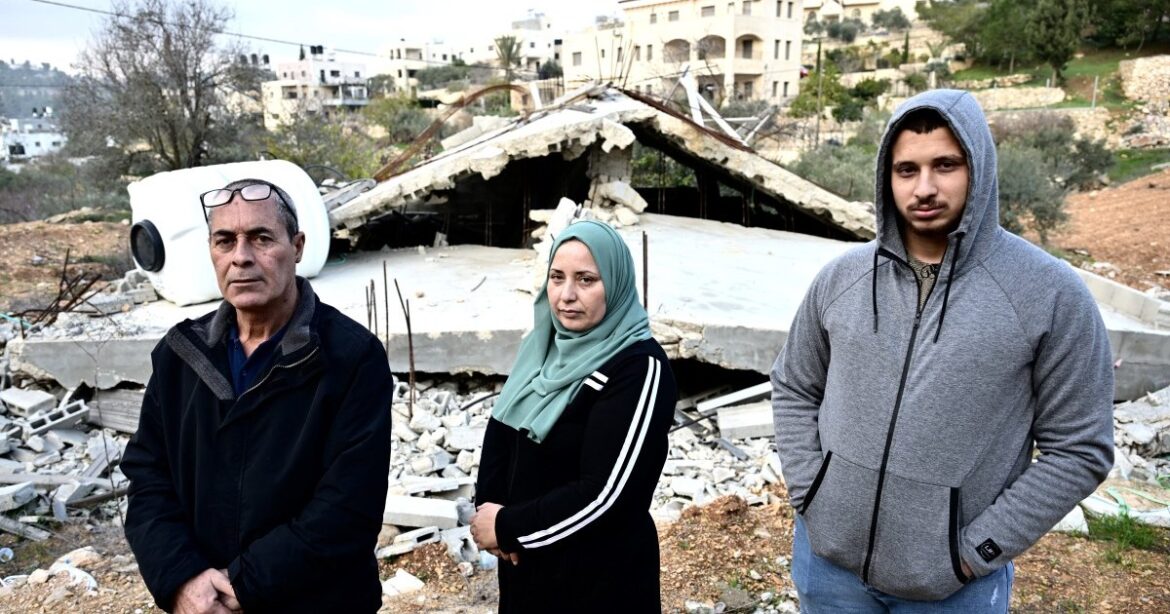Wiping away tears, Ghadeer al-Atrash stood outside his bulldozed home in a Palestinian village adjoining Israeli settlements, a fate feared by hundreds of villagers as Israel ramps up wartime demolitions.
The destruction of homes built without Israeli-issued permits, which activists say are almost impossible for Palestinians to obtain due to Israel’s restrictive planning policy, is upsetting the territories occupied for years.
But activists say the wartime demolitions illustrate the wider effects of the conflict on Palestinian communities beyond the Gaza Strip.
Al-Atrash, a divorced mother of two, scraped together about 200,000 shekels ($54,000) to build a house in al-Walaja, a village carved out of hillside terraces and olive groves divided between the West Bank and the Is occupied by Israel. Jerusalem.
“My son dropped out of school. We saved money, borrowed money,” said al-Atrash, 43, standing in front of the concrete debris of his house demolished last February.
“I had built it to keep me away from exhaustion and misery, to ensure stability in my life.”
Dozens of al-Walaja families whose demolition orders are pending fear the same fate.
Since the start of the conflict between Israel and Hamas on October 7, the government has accelerated demolitions in Palestinian areas, in what activists call collective punishment that threatens to inflame tensions already exacerbated by the fighting.
Some 444 Palestinians from Area C – West Bank territory under full Israeli control – and annexed East Jerusalem were displaced following demolitions due to lack of permits, according to the United Nations humanitarian agency (OCHA).
This represents a 36 percent increase in travel since the start of 2023, OCHA said.
The part of al-Walaja affected by the demolitions falls within East Jerusalem, where the Israeli activist group Ir Amim said demolitions jumped more than 50 percent in the three months since October 7 compared to remainder of 2023.
The Israeli Supreme Court suspended orders to demolish 38 houses in al-Walaja, which has a population of around 3,000. At least six homes that are not part of the freeze are at imminent risk, Ir Amim said.
At the heart of the demolitions is what OCHA calls Israel’s “discriminatory” planning policy.
Since 1967, when Israel occupied the West Bank and annexed East Jerusalem, authorities have never developed a zoning plan for the al-Walaja area under its jurisdiction, making it impossible for residents to build legally.
Israel claims all of Jerusalem as its undivided capital. Many Palestinians see the demolitions as an attempt to expel them from annexed East Jerusalem, which they want to see become the capital of a future Palestinian state.
The sprawling Jewish settlements of Gilo and Har Gilo – illegal under international law – have already encroached on al-Walaja’s land.
The village is also surrounded by the miles-long West Bank barrier – built by Israel in the early 2000s – which has cut residents off from pastures and fresh water sources.
Many Palestinians targeted by demolition orders say they choose to demolish their own homes to escape high government taxes and the cost of renting municipality bulldozers.
“Israel, as the occupying power, has an obligation to protect the Palestinians,” said Greg Puley, acting head of OCHA’s office for the occupied Palestinian territories.
“Palestinians must have access to a fair and equitable planning system. »



